Major acquisition for the Kimbell Art Museum in Fort Worth , Texas, United States, which announced the day before yesterday the acquisition of Still Life with Melon, Watermelon and Other Fruits, painted around 1610-1620 by the Italian artist known as the "Pensionante del Saraceni," a curious name given by art historians to a yet unidentified artist who is associated with a small group of paintings made in Rome around 1610-1620. This silent but powerful work is among the most beautiful and earliest independent still lifes painted in Italy in the wake of Caravaggio. The acquisition comes at a time when the Kimbell Art Museum is returning Caravaggio’s Bari, a work from around 1596-1597 that had been on display at the Caravaggio 2025 exhibition at Palazzo Barberini in Rome, which welcomed more than 450,000 visitors. Both paintings are now on display at the Kimbell in the Louis I. Kahn Building. Still Life with Melon, Watermelon and Other Fruit had been offered at auction in 2023 by Artcurial in Paris, with an estimate of €1.5-2 million: it had gone unsold. After the auction, the painting ended up in a private collection in Paris and was later bought by New York gallerist Nicholas Hall. The museum, however, would not disclose the price it paid to acquire the work.
“The Saraceni Pensioner is a fascinating and mysterious painter who worked among the Caravaggio artists in Rome in the decade following Caravaggio’s death in 1610,” says Eric M. Lee, director of the Kimbell Art Museum. " Still Life with Melon, Watermelon, and Other Fruits is one of the artist’s most important paintings and will make a significant contribution to the Kimbell Art Museum’s small but outstanding collections of still lifes and works influenced by Caravaggio’s distinctive style."
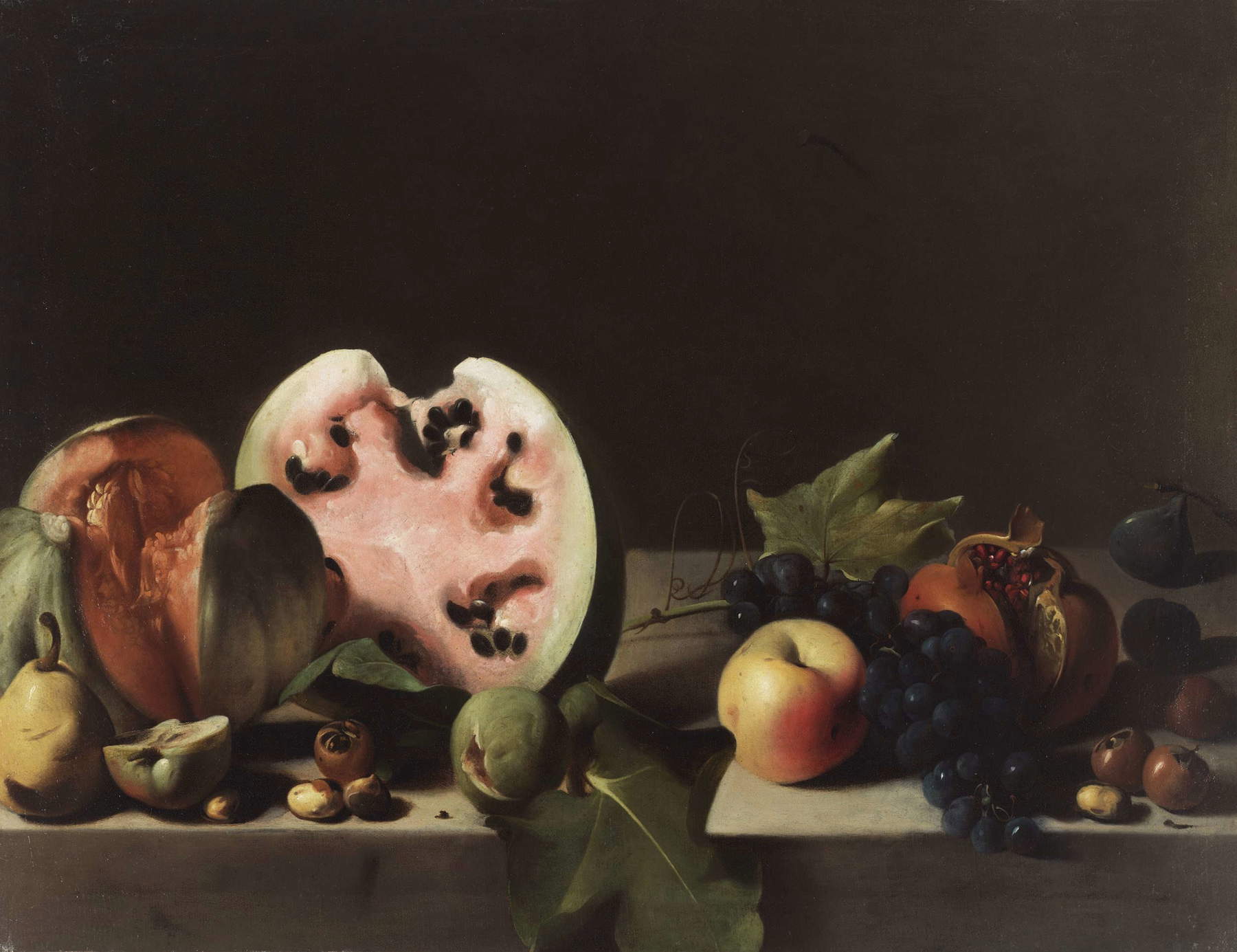
Still Life with Melon, Watermelon and Other Fruits is a composition measuring approximately 55.5 x 71.5 cm that features two groups of almost life-size fruits, fully ripe and ready to be eaten. A soft, enveloping light reveals elements that are both realistic and poetic, including the individual texture and color of each fruit: a juicy orange melon, the moist pink flesh of a watermelon, a pomegranate, a cluster of dark blue grapes, a red and yellow apple, and the mottled skin of a green pear. Like most still lifes, it stimulates the senses: a feast for the eyes, the fruit is fragrant, gustatory and tactile, yet momentarily silent, waiting to be consumed. The artist’s refinement is evident in the tight framing of the composition, which barely cuts through the arrangement of the fruit at the sides. Against a dark background, the objects are positioned toward the front edge of a delicately lit stone surface, the back edge of which is tilted slightly forward to be showcased.
The composition is brought closer to the viewer, while curled leaves and grape tendrils, along with smaller fruits and seeds scattered across the painting, accentuate the feeling of proximity and tangibility. What at first glance appears to be a distant darkness beyond the stone table suddenly reveals itself as a nearby wall when the viewer notices an inconspicuous nail casting a soft shadow like a sundial.
Each element of this still life is separate, structured according to the rhythm of solids and voids and abstract volumes that give the work a modernity reminiscent even of Cézanne. The harmony of the malachite green of the leaves, the pink of the watermelon and the red-purple of the pomegranate testifies to the Pensioner’s skill as a colorist. With its neutral background, restrained and balanced composition, and volumetric rendering of fruit (particularly apples), Pensionante’s still life shows a direct knowledge of Caravaggio’s early works, such as Boy with Basket of Fruit (1593) and Basket of Fruit (c. 1594-1598). However, where Caravaggio portrayed withered leaves and moth-eaten apples, the Pensionante suggested decadence in a more subtle way, here with the browning of the sliced apple and the stained base of the pear. Moreover, in contrast to Caravaggio’s extreme tonal contrasts, the Pensionante’s light is soft, almost velvety in some areas, dissolving shapes and multiplying light reflections in the shadows. The lighting is particularly remarkable on the watermelon, which has a pearly effect characteristic of the artist. In addition to Caravaggio, the Still Life of the Pensioner is influenced by Pietro Paolo Bonzi (Cortona, 1576 - Rome, 1636), with whom, Mina Gregori suggested, the painter must have had a friendly relationship. The choice of fruit and formal fullness is common to both painters, although the Pensionante preferred to arrange his still lifes horizontally, rather than stacking objects on top of each other.
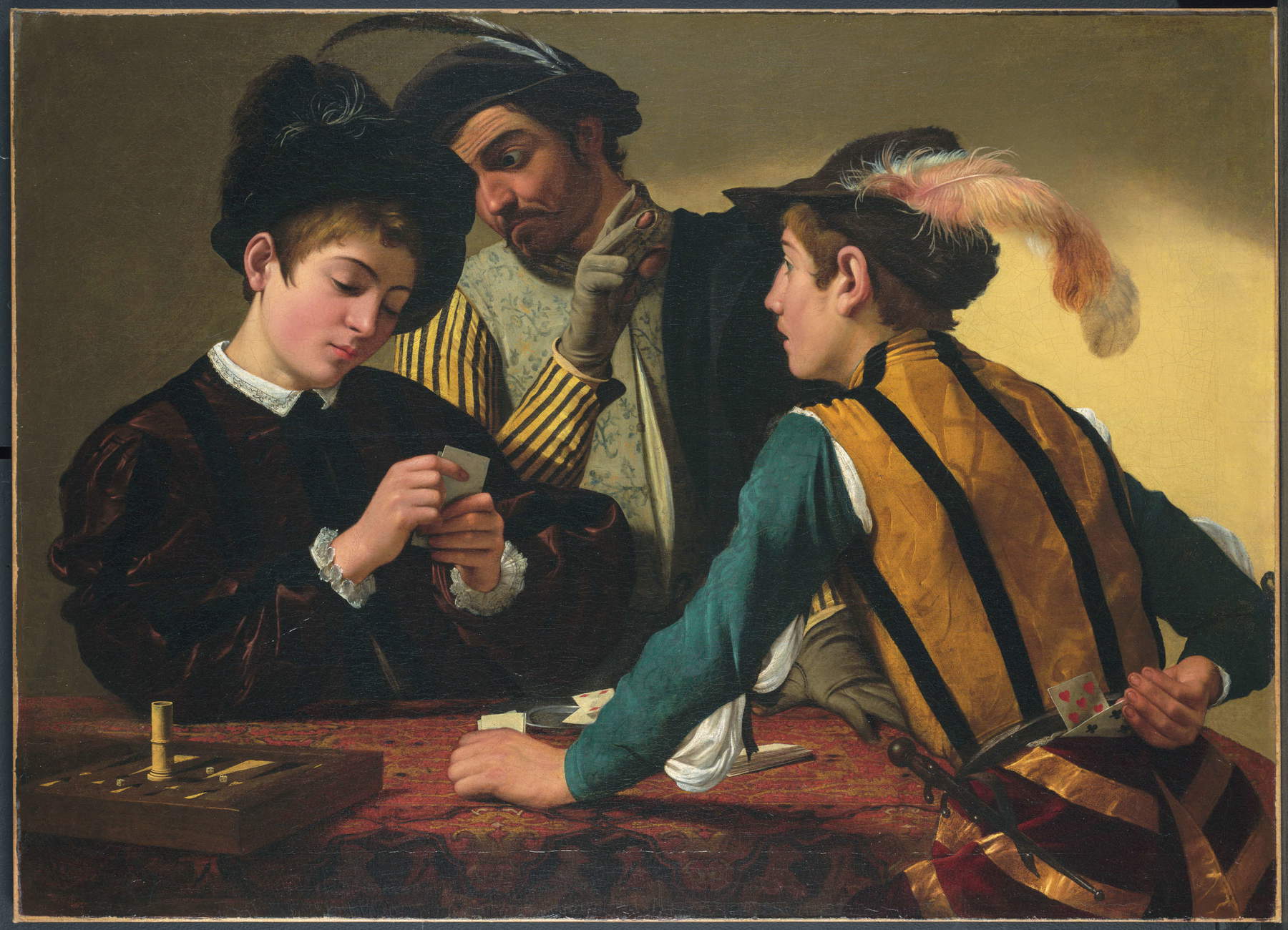
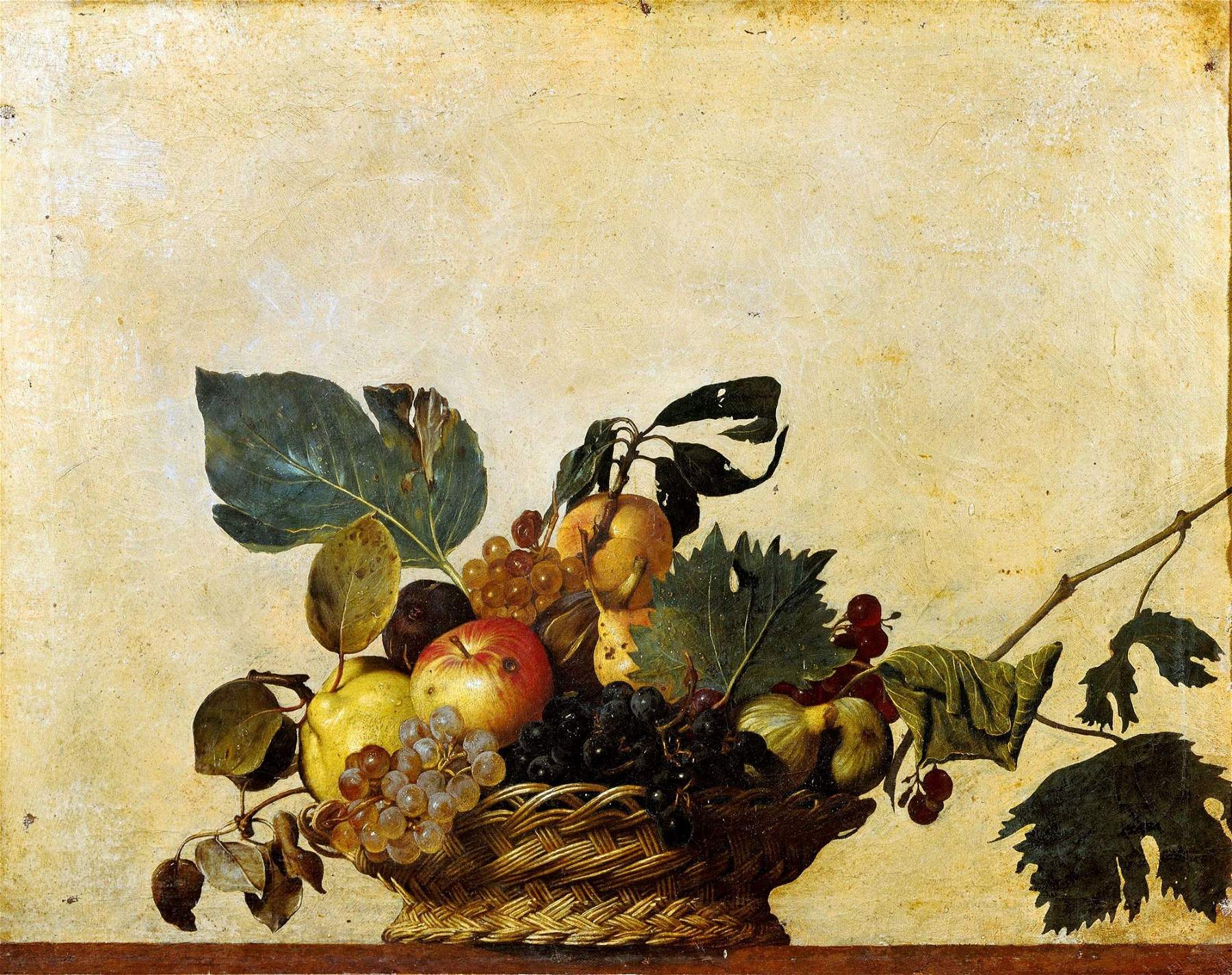
Given the painting’s very high quality, it is surprising that no name can be attributed to its author. The unidentified artist of Still Life with Melon, Watermelon and Other Fruits, as mentioned, has been nicknamed the “Saraceni’s Pensioner” (the name was coined by Roberto Longhi in 1943), because he is believed to be an artist who was hosted by Carlo Saraceni (Venice, 1579 - 1620), a Venetian painter active in Rome, a painter known to have hosted pensioners, and moreover shows affinities with Saraceni’s paintings. His paintings show a deep sympathy and understanding for Caravaggio’s innovative style. The Pensionante stands out as a master because of its realism, soft light, and overall sober, calm, and poetic atmosphere. Longhi believed that the Pensionante was in some ways more adept at interpreting Caravaggio’s lesson than Saraceni himself, who never painted still lifes. Longhi proposed that the Pensionante was French, but his name and nationality remain unknown; attempts to identify him with Jean Le Clerc, Guy François, Georges de la Tour, and the Flemish Jacob van Oost the Elder have all failed. Since his first identification by Longhi, twelve paintings have been attributed to the Pensioner. None are dated, although one is listed in a 1621 inventory, which may represent a terminus ante quem for the artist’s work. Most of his works depict half-length, inexpressive figures in bare settings with an atmosphere of mystery and subdued poetry.
Although most of the Pensioner’s corpus is figurative, his best-known work is another still life, Still Life with Fruit and Pitcher (c. 1610-1620) preserved at the National Gallery of Art in Washington. This work, previously attributed by Longhi to Caravaggio himself, bears a striking resemblance to the painting purchased by the Kimbell Art Museum, including a similar arrangement of fruit with an open melon, a cut watermelon, a pear, a fig, and a bunch of grapes. Open melons with visibly moist flesh recur in the Pensioner’s Fruit Seller (1615-1620) preserved at the Detroit Institute of Arts, where they occupy a stone shelf in the foreground. The nearly identical dimensions of the Washington still life and the present one raise the possibility that the two paintings were originally conceived as a pair. However, Mina Gregori has suggested a slightly earlier date for the Kimbell’s painting, which she believes is closer to the Pensioner’s Cook in the Kitchen, preserved at the Corsini Gallery in Florence. The latter shares with the present work the trompe l’oeil of the isolated nail on the wall, whose shadow carves out the pictorial space.
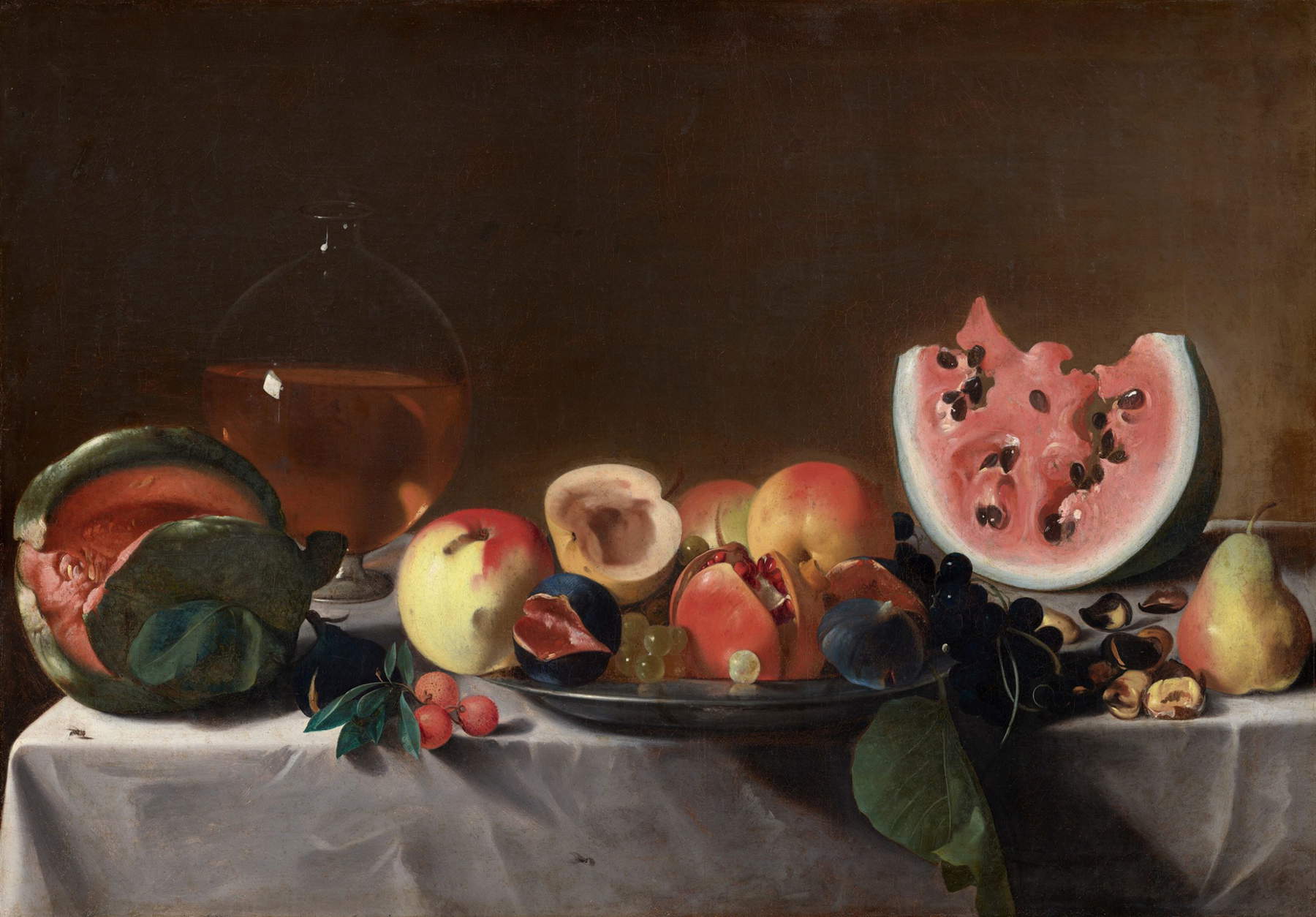
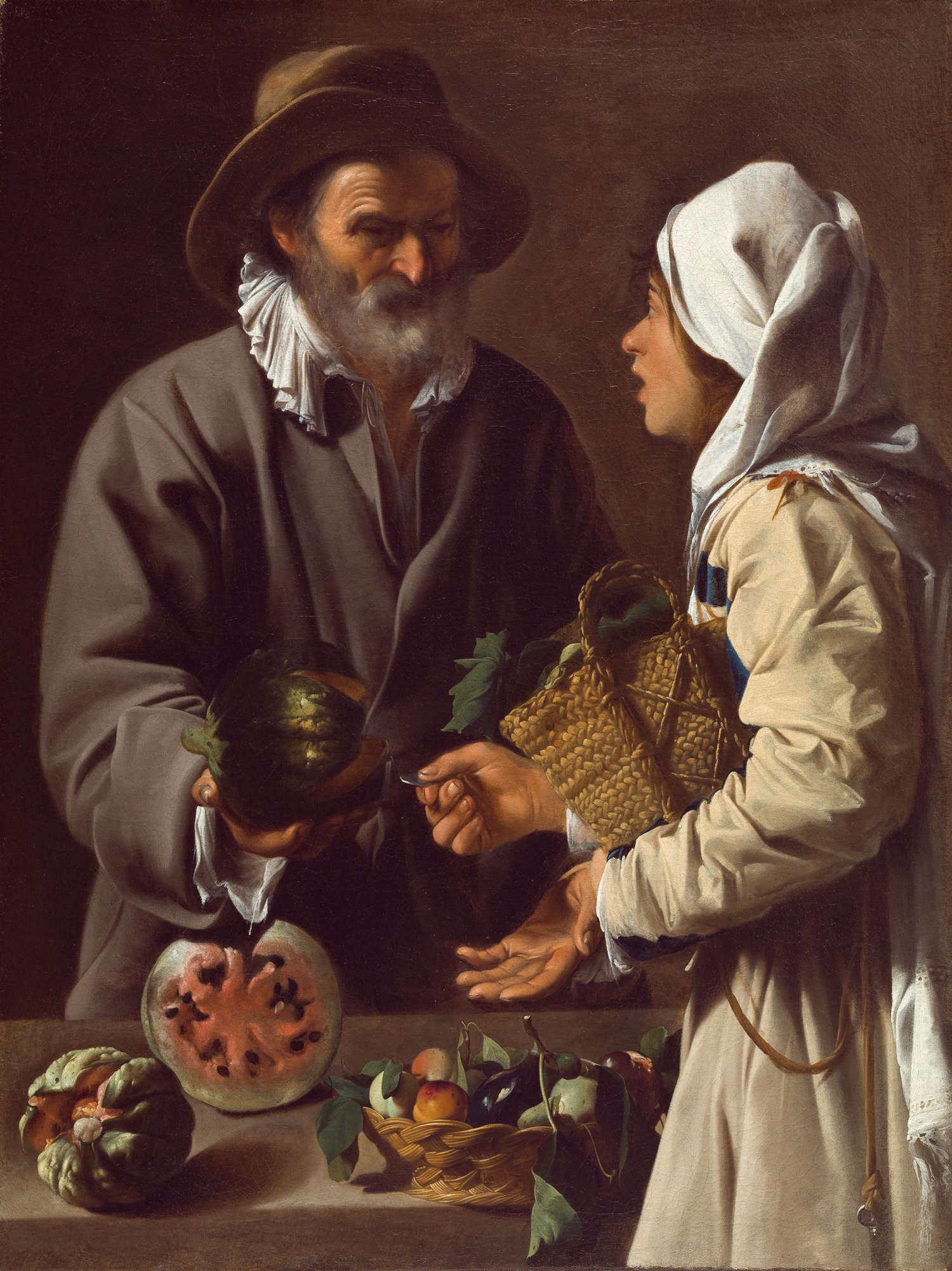
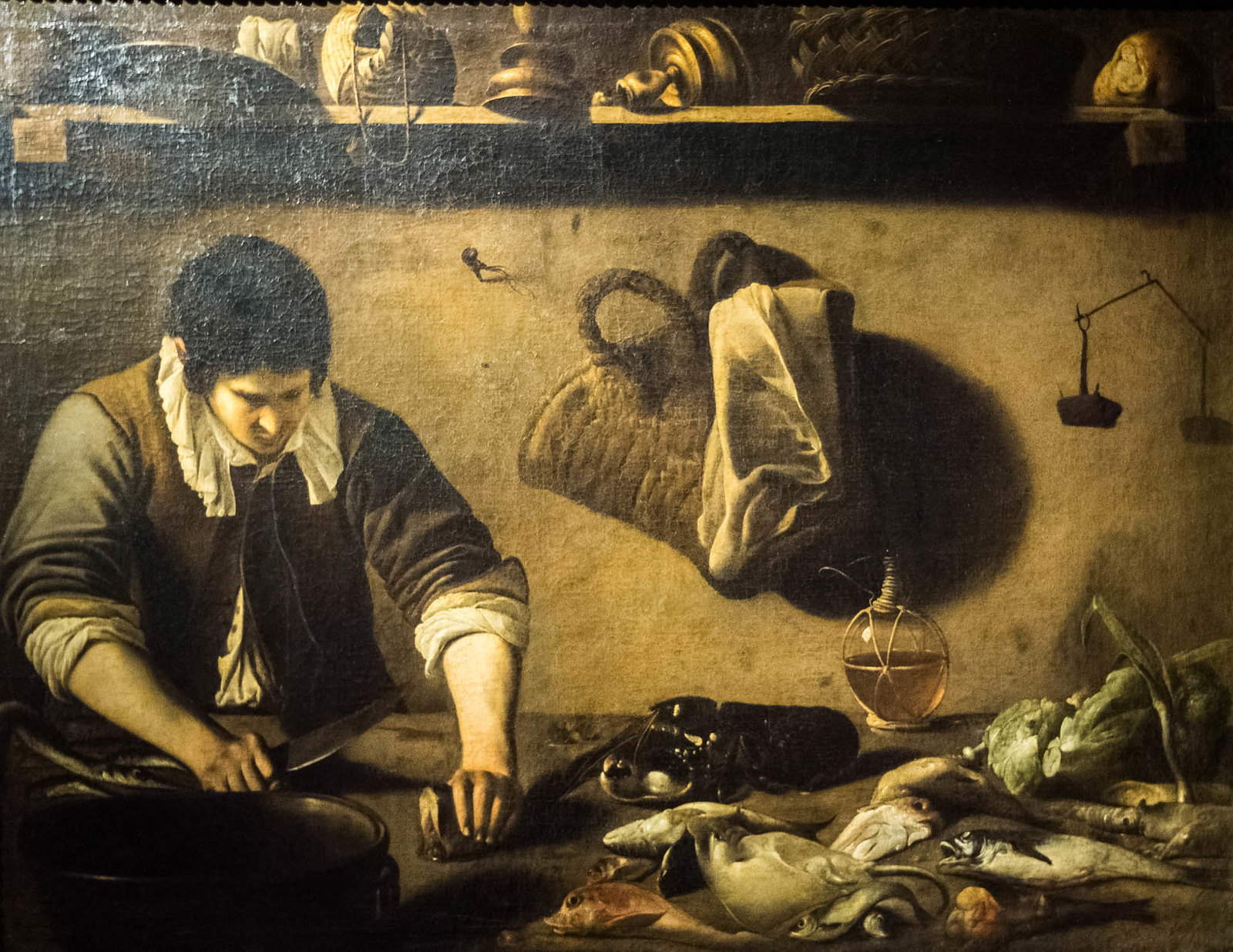
Unlike Caravaggio’s famous Canestra with its stained, insect-infested fruit and withered leaves, the Pensioner’s still life does not immediately suggest the theme of vanitas, the passage of time leading to mortality. Nor is it an idealized still life depicting perfect specimens. Rather, the Still Life with Melon, Watermelon, and Other Fruits exalts the natural world and the real qualities of the fruits, all varieties that would have ripened in late summer or fall to be enjoyed in all their abundance.
Still Life with Melon, Watermelon and Other Fruits joins other still lifes in the Kimbell, including Jacques de Gheyn’s Vase of Flowers with Curtain (1615), Louise Moillon’s Still Life with Strawberries, Basket of Cherries and Gooseberry Branch (1631), Jean Simé’sCut Melon (1760)on Chardin, Luis Meléndez’s Still Life with Oranges, Jars and Candy Boxes (c. 1760-1765), and Anne Vallayer-Coster’s Still Life with Mackerel (1787). The new acquisition will be displayed alongside Caravaggio’sBari, which influenced this and countless other works.
According to Nicholas Hall, this still life is to be counted among the finest Caravaggesque still lifes painted in Italy. Its importance was first recognized by Mina Gregori herself, who used it as the cover of her definitive 2003 catalog of Italian still lifes. It is in fact the pendant of the famous Still Life of the Pensioner at the National Gallery of Art in Washington, once exhibited in the Contini Bonacossi collection alongside Zurbaran’s Still Life, now at the Norton Simon Museum. An authority such as Pierre Rosenberg described “the fascinating originality of the Pensioner’s mysterious personality, which lies in his fluidly executed paintings, with their soft light, delicate and quiet poetry and melancholy reserve.”
 |
| The Kimbell Art Museum acquires a masterpiece: the Saracens' Still Life of the Pensioner |
Warning: the translation into English of the original Italian article was created using automatic tools. We undertake to review all articles, but we do not guarantee the total absence of inaccuracies in the translation due to the program. You can find the original by clicking on the ITA button. If you find any mistake,please contact us.